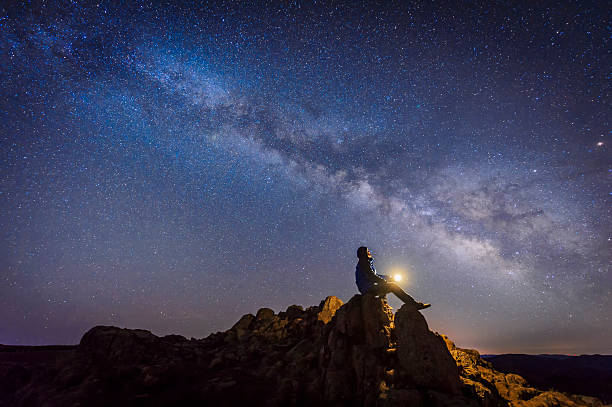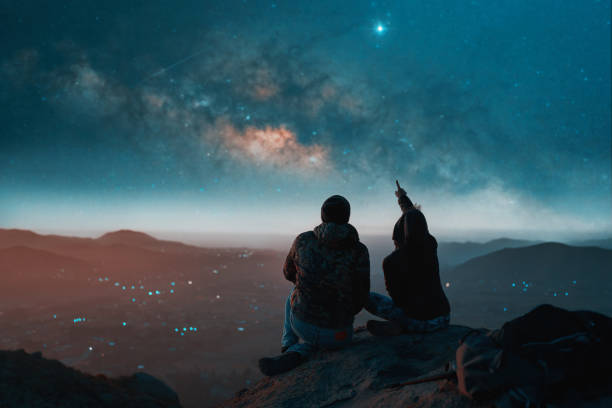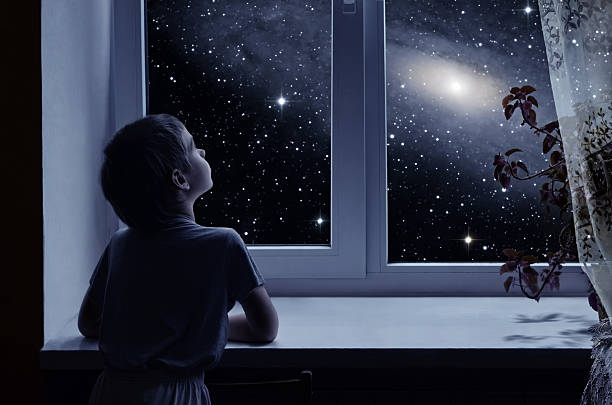How To Describe Stars In Writing Poetically (10 Best Tips)
How To Describe Stars In Writing
How To Describe Stars In Writing: In the boundless expanse of the literary cosmos, the art of describing stars transcends mere prose; it becomes a celestial ballet where words waltz with the brilliance of distant suns.
To capture the essence of stars in writing is to embark on a journey through the nocturnal tapestry, where each word is a luminescent stroke on the canvas of the night sky.
Join me in this exploration, as we unravel the language of the stars and delve into the cosmic lexicon that breathes life into the distant luminaries.
From the palette of stellar hues to the poetic choreography of constellations, we will navigate the celestial realm, employing literary techniques that elevate star descriptions into an art form.
So, fellow wordsmiths and stargazers, let us embark on a literary odyssey under the cosmic canopy, where the ink of imagination meets the radiant language of the universe.
How To Describe Stars In Writing
Here’s a step-by-step process on How To Describe Stars In Writing:
Observe and Note Appearance
Begin by observing the stars and noting their appearance. Describe their size, brightness, and color. Consider whether they twinkle or appear steady in the night sky.
Identify Constellations
Look for recognizable patterns or constellations formed by the arrangement of stars. Describe the shapes and stories associated with these groupings.
Consider Location and Time
Take into account the specific location and time of your observation. Stars may appear differently depending on your position on Earth and the time of year.
Use Imagery and Metaphors
Enhance your description by incorporating vivid imagery and metaphors. Compare stars to diamonds, shimmering pearls, or distant lanterns to evoke a sense of wonder and beauty.
Note Brightness and Magnitude
Mention the brightness of the stars and refer to their magnitudes. Some stars may be faint, while others are exceptionally bright. Use a scale to describe their luminosity.
Highlight Unique Features
Identify any special characteristics, such as variable brightness, multiple stars in a system, or unique colors. Note if any stars are part of a binary system or if they exhibit any peculiar behaviors.
Connect to Emotions and Atmosphere
Describe the emotional impact of the starry sky. Connect the scene to feelings of awe, tranquility, or inspiration. Consider how the stars contribute to the overall atmosphere of the night.
Incorporate Scientific Facts
If appropriate, include relevant scientific facts about the stars you observe. Mention their distance from Earth, spectral types, or any notable historical or cultural significance.
Utilize Descriptive Language
Use rich and descriptive language to convey the ethereal beauty of the stars. Engage the reader’s senses by describing the way the starlight fills the night or the sound of silence under the cosmic canopy.
Conclude with Reflection
Wrap up your description by reflecting on the broader significance of the stars. Consider their role in the vastness of the universe and their timeless presence in human culture and imagination.

Setting the Scene
As the velvety night sky unfolds its cosmic tapestry, painting a masterpiece with celestial hues, it beckons us into a realm where time is an illusion, and the stars, our guiding storytellers.
Imagine a vast expanse, a nocturnal canvas splattered with the glimmering remnants of ancient stories, each star a luminescent character in the grand theater of the cosmos.
Beneath this celestial spectacle, the earthly stage is set: a silhouetted landscape, a hushed symphony of rustling leaves, and the intoxicating scent of night blooms carried by a gentle breeze.
It is here, in the quiet theater of the night, that we prepare to decode the language of stars and let the constellations unveil their secrets.
Establish the context for the star description
As twilight gracefully yields to the embrace of the night, the canvas of the heavens unfurls above, adorned with a myriad of shimmering diamonds.
The location, a sanctuary where the boundaries between Earth and cosmos blur, sets the stage for our celestial exploration.
Picture a remote hillside, a solitary plateau, or a secluded beach, far from the intrusive glow of city lights. The air, crisp and cool, carries the whispers of nature as it prepares to share its nocturnal wonders.
The symphony of crickets and the distant lull of a gentle stream serve as the prelude to an astronomical spectacle.
In this cocoon of darkness, devoid of artificial luminance, the stars emerge as beacons of untold stories, waiting to be deciphered against the inky backdrop of the universe.
This is the stage upon which we cast our gaze, where the starry tapestry unfolds, and where the magic of the cosmos reveals itself.
Understanding the Stars
Embarking on a cosmic odyssey, understanding the stars is like deciphering a celestial code written in the ink of the universe.
These luminous orbs, scattered across the vast expanse, carry tales of birth, fusion, and cosmic ballet. Picture the stars as ancient storytellers, each with its unique narrative etched in the fabric of time.
From the fiery brilliance of blue giants to the subtle glow of red dwarfs, the cosmic cast reveals itself. Constellations, those cosmic constellations of imagination, connect celestial dots, weaving a celestial tapestry that has captivated dreamers and astronomers alike for eons.
Unraveling the astronomical alphabet, we uncover the secret language of the cosmos, where stars aren’t just distant sparks but celestial scribes, chronicling the epic tale of the universe.
Buckle up, fellow star-gazers, for in understanding the stars, we unlock the gateway to a cosmic narrative that transcends the boundaries of our earthly existence.
Basic astronomical background
In the vast astronomical theater, stars take center stage, casting their radiant glow across the cosmic expanse. Understanding these celestial luminaries requires a grasp of the basic astronomical elements that shape their existence.
Stars, those cosmic crucibles of fusion, come in a kaleidoscope of types — from the colossal brilliance of supergiants to the modest gleam of dwarfs.
Their life cycles, marked by the dance of stellar nurseries and the explosive finales of supernovae, add layers to the cosmic drama.
Constellations, celestial connect-the-dots drawn by the human imagination, further embellish the night sky. Dive into the cosmic lexicon to discern the intricacies of light-years, parsecs, and the dazzling spectrum of stellar colors.
This celestial primer unveils the stellar symphony overhead, inviting us to explore the astronomical ballet that unfolds against the backdrop of the ever-expanding cosmos.
Observational Techniques
Embarking on a celestial safari, observing stars is more than a mere gaze into the night sky; it’s an orchestrated dance between the inquisitive eye and the cosmic performer.
Equip yourself with the lenses of curiosity, and the telescope becomes a time machine, whisking you away to epochs where stars birthed galaxies.
Binoculars, the trusty companions of cosmic voyagers, reveal the intricate details of constellations, turning the vastness of space into an intimate celestial tapestry.
Adjust the focus, fine-tune the angles, and suddenly, stars cease to be distant dots; they become radiant protagonists in an unfolding cosmic drama.
Each observational technique is a portal, a key to unlocking the secrets of the stellar stage. So, stargazers, ready your instruments, for in the dance between lenses and stars, the universe unfolds its enchanting narrative, and you are the privileged audience to this cosmic spectacle.

Utilizing telescopes and binoculars
In the arsenal of cosmic exploration, telescopes and binoculars emerge as the enchanted lenses through which we peer into the secrets of the night sky.
Telescopes, those celestial time machines, amplify the faint whispers of distant stars, transforming them into detailed portraits of cosmic wonders.
Choose the right telescope, and you embark on a journey through the cosmos, from the intricate craters of the moon to the ethereal rings of Saturn.
Meanwhile, binoculars, the nimble scouts of the stargazing realm, offer a more personal encounter with the celestial ballet.
With binoculars in hand, constellations become vibrant celestial dioramas, and star clusters transform into dazzling jewels.
Mastering the art of adjusting settings becomes a cosmic calibration, enhancing the spectacle that unfolds above.
Whether you wield a telescope with the gravity of an astronomer or cradle binoculars with the curiosity of an explorer, these optical companions are the keys to unlocking the celestial wonders that await in the velvety expanse above.
Descriptive Elements
In the cosmic realm where stars twinkle like scattered stardust, the artistry of description transcends the mundane and elevates the celestial narrative to a symphony of the senses.
The color palette of the night sky unfolds as a cosmic kaleidoscope, from the cool azure embrace of distant giants to the fiery red whispers of stellar storytellers.
Imagine the stars not merely as distant luminaries but as radiant storytellers, each with a hue that paints the canvas of the universe.
Intensity and brightness become the heartbeat of the cosmic ballet, with stars shimmering in a choreography that defies earthly conventions.
The arrangement and patterns of constellations, akin to celestial hieroglyphs, invite the imagination to craft metaphors and similes, transforming the night sky into a boundless tapestry of stories waiting to be written.
As we delve into the descriptive elements of the cosmos, we unearth not just distant stars, but the very poetry of the universe, written in the language of light and shadow.
Color Palette
In the cosmic atelier where the night sky unfurls its masterpiece, the color palette of the stars paints a vivid tapestry that ignites the imagination.
Stars, those celestial artists, don’t merely shine in uniform brilliance; they express themselves through a mesmerizing spectrum of colors.
Picture the sapphire glow of hot, massive stars, casting a bold hue against the velvet curtain of space. Contrast this with the ruby whispers of cooler stars, weaving a tapestry of warmth in the cosmic night.
Each color, a chapter in the story of the universe, unveils the temperature, age, and composition of these stellar performers.
From the icy blues of distant galaxies to the fiery reds of aging suns, the celestial color palette is a cosmic language that speaks volumes, inviting stargazers to decipher the rich hues of the night sky and interpret the stories written in radiant ink across the cosmos.
Metaphors and Symbolism
In the nocturnal theater where stars emerge as cosmic actors, metaphors and symbolism intertwine, casting the night sky as an ethereal canvas of poetic imagination.
The heavens become an inkwell of metaphors, where each star is a luminescent metaphorical gem, sparkling with the stories of ancient myths and dreams.
Constellations transform into celestial hieroglyphs, a symbolic language written across the vast expanse. The night sky, then, is not just a celestial stage but a boundless library of cosmic tales, where stars are characters in an ever-evolving narrative of human experience.
Through metaphors, the cosmos becomes a reflection of our emotions, aspirations, and mysteries, inviting us to decode the symbolism etched in the glittering tapestry above.
In this cosmic allegory, the stars are not just distant luminaries; they are metaphysical messengers, whispering the secrets of the universe to those who dare to listen with the ears of the soul.
Associating stars with emotions and concepts
Beneath the celestial canopy, stars don’t merely twinkle; they resonate with the echoes of human emotion and the abstract cadence of our deepest concepts.
Each shimmering point of light becomes a poignant note in the cosmic symphony, playing a melody that transcends the boundaries of the earthly realm.
Stars, with their distant brilliance, have long been companions to our emotions — the twinkling lights mirroring the glimmers of joy, the radiant giants reflecting the warmth of love, and the fading novas embodying the bittersweet dance of loss.
Constellations, arranged like cosmic constellations of the human psyche, invite us to project our stories onto the heavens.
The night sky becomes a celestial Rorschach, a mirror to our hopes, fears, and dreams. In this astral dance between the ethereal and the emotional, stars cease to be distant orbs; they transform into cosmic confidants, reflecting the kaleidoscope of human experience against the inky canvas of the universe.

Cultural and Historical References
Beneath the star-strewn tapestry of the night sky lies a celestial library, where the twinkling luminaries carry the weight of centuries of human storytelling.
Stars, like ancient scribes, have been inscribing our cultural and historical narratives across the cosmos since time immemorial.
Constellations are the inked pages, chronicling tales of heroes, gods, and mythical beasts. Across cultures, stars have been navigational aids, guiding explorers and storytellers alike through the uncharted seas of the universe.
From the zodiac constellations of ancient astrology to the indigenous star maps that crisscross the celestial dome, the night sky is a living testament to the rich tapestry of human history.
Each star, a flickering ember of folklore, carries the whispers of civilizations long gone and sparks the imaginations of those who gaze upward, connecting the present to the echoes of our shared past.
In this cosmic tapestry, stars transcend being distant suns; they become luminous threads weaving together the fabric of our collective human saga.
Incorporating myths and legends
In the nocturnal embrace of the cosmos, stars become radiant vessels of ancient myths and timeless legends, breathing life into the tapestry of the night sky.
Constellations, those celestial hieroglyphs, are the celestial remnants of cultural sagas, as if the gods themselves etched their stories across the heavens.
Orion strides defiantly, a mythical hunter frozen in time, while Cassiopeia sits in regal repose, forever bound to her cosmic throne.
These stellar narratives are not mere points of light; they are the chapters of our collective human imagination.
Across cultures and epochs, stars have been the ink with which we write our tales of creation, love, and heroism.
The night sky, then, is a celestial theater where the dramas of gods and heroes play out in twinkling brilliance, inviting each stargazer to become a modern-day storyteller, connecting with the ancient myths that still dance among the stars.
Creating Atmosphere
In the cosmic theater of the night, creating atmosphere isn’t merely about the interplay of celestial bodies; it’s about orchestrating a symphony that resonates with the soul.
Picture a nocturnal stage where stars, like luminescent actors, cast their radiant glow upon a canvas of darkness.
The air, pregnant with mystery, cradles the whispers of a gentle breeze, and the rustle of leaves becomes the overture to a cosmic opera.
In this atmospheric ballet, the night sky isn’t just a backdrop; it’s a living, breathing entity that weaves its influence into the very fabric of the scene.
The stars become not just distant suns but celestial spotlights, illuminating the drama of the night. The interplay of shadows and light creates a chiaroscuro of emotions, rendering the atmosphere thick with anticipation, enchantment, or perhaps a touch of cosmic melancholy.
This is the cosmic alchemy where the ambiance becomes an integral character, and the stargazer, an audience of one, immerses in the atmospheric spectacle that unfolds in the vast expanse above.
Blending star descriptions with the overall atmosphere of the scene
In the cosmic choreography of storytelling, blending star descriptions with the overall atmosphere of the scene is akin to weaving stardust into the very fabric of the narrative.
Stars cease to be mere celestial bodies; they become luminescent keystrokes that compose the nocturnal sonnet.
As the stars twinkle overhead, their radiance casts a soft glow on the landscape, painting the surroundings with an ethereal luminescence.
The atmospheric dance of shadows and silhouettes becomes a canvas where starlight and earthly elements entwine, creating a symbiotic relationship between the cosmic and the terrestrial.
The cool, crisp air tinged with the scent of night blossoms sets the stage for an otherworldly experience.
Every star, a storyteller in this cosmic symphony, contributes to the mood, whether it be a scene of quiet contemplation under a solitary star or a vibrant cosmic celebration as constellations come alive in the night.
Thus, the stars become not just observers but integral participants in the atmospheric drama, elevating the narrative to a celestial crescendo that resonates with the very essence of the night.
Literary Techniques
In the celestial lexicon where stars are the syllables of the night, employing literary techniques is akin to crafting verses with cosmic ink. Metaphors, those celestial brushstrokes, paint the night sky as a canvas where each star is a luminescent word, telling stories beyond the reach of human language.
Personification breathes life into the celestial bodies, turning distant stars into characters with cosmic personalities, each twinkling like a mischievous wink or a solemn nod.
Similes become the cosmic connectors, likening the vastness of the universe to the imagination’s wildest dreams.
Through personifying the night and embracing similes that dance between the earthly and the astral, the stars transform from distant entities into characters in an epic celestial saga.
In this celestial manuscript, literary techniques are not just tools; they are the enchanted keys to unlock the magic of the night, where the language of the cosmos whispers its secrets to those who dare to read between the stars.
Use of personification
In the cosmic theater, personification transforms the seemingly distant and aloof stars into vibrant characters, each with its own celestial persona.
The heavens, once a silent and distant expanse, become an animated tapestry where stars take on roles as cosmic storytellers.
Picture them as ancient luminaries, engaged in a luminous dialogue that transcends the boundaries of mere astral bodies.
A lone star might twinkle as if sharing a secret, while another beams with the confidence of a cosmic sovereign.
Through personification, the night sky becomes a celestial stage, where stars aren’t just silent spectators but active participants in a grand cosmic narrative, breathing life into the dark expanse and inviting stargazers to forge a personal connection with the celestial cast above.
Crafting evocative metaphors
In the celestial realm, crafting evocative metaphors is akin to unraveling the cosmic poetry hidden within the vast expanse of the night sky.
Stars, those celestial embers, become metaphors for dreams suspended in the cosmic tapestry, each a glimmering aspiration waiting to be realized.
The night itself transforms into a sprawling metaphorical canvas, an infinite abyss where wishes and wonders intertwine.
Constellations, like literary symbols written in the language of stars, become metaphors for the shared myths and collective imaginings that bind humanity across cultures and time.
Crafting metaphors under the celestial canopy allows us to transcend the boundaries of language, reaching for the sublime as we connect the tangible world to the intangible wonders that shimmer overhead.
It is in these evocative metaphors that the universe reveals itself as both a cosmic enigma and an open book, beckoning us to interpret its secrets through the artful language of the night.
Editing and Refining
In the cosmic workshop of writing, editing and refining descriptions of stars is the alchemical process where raw inspiration transforms into polished celestial prose.
Imagine it as the meticulous sculpting of constellations, each revision a chisel’s stroke carving precision into the cosmic narrative.
Like a celestial composer fine-tuning a symphony, the art lies in harmonizing words until they resonate with the brilliance of the stars themselves.
It’s a dance with language, an interstellar waltz where every word and punctuation mark is a celestial note aligning in cosmic cadence.
As the celestial scribe, editing is not a mere correction but a quest for perfection, ensuring that each description is a luminous gem that sparkles with clarity, grace, and the ineffable magic of the night sky.
So, fellow cosmic wordsmiths, let the editing journey be as captivating as the stargazing itself, for in the refining process, we unveil the true splendor of the literary cosmos we seek to create.
Reviewing and revising star descriptions
In the celestial edit room, reviewing and revising star descriptions is the cosmic sculpting of language, where each revision refines the shimmering details of the astral tableau.
It’s akin to polishing the facets of a celestial gemstone until it radiates with the brilliance of a perfected constellation.
As the words undergo scrutiny, they transform from mere descriptors into portals, inviting readers to traverse the expansive realms of imagination.
With each revision, clarity emerges like a guiding star, ensuring that the narrative remains as crystal-clear as the darkest night sky.
The process of reviewing and revising isn’t a task of correction; it’s a celestial dialogue between the writer and the cosmos, aligning the literary heavens with precision and grace.
The cosmic ballet of words becomes a dance of refinement, where each adjustment enhances the overall harmony of the narrative, leaving the reader with an experience that mirrors the enchantment of stargazing itself.
Frequently Asked Questions about How To Describe Stars In Writing
How do I begin describing stars in writing?
Start by keenly observing the night sky, taking note of the stars’ size, brightness, and colors. Pay attention to any patterns or constellations they form.
Should I consider the time and location while describing stars?
Yes, the appearance of stars varies based on your geographic location and the time of year. Mentioning these factors adds depth to your descriptions.
What role do constellations play in star descriptions?
Constellations provide recognizable patterns and stories. Describing them adds context and visual interest to your portrayal of the stars.
How can I make my star descriptions more vivid?
Use imaginative language and metaphors. Compare stars to objects like diamonds or lanterns to evoke a sense of wonder and beauty.
Why is it important to note the brightness and magnitude of stars?
Mentioning brightness and magnitude helps convey the diversity of stars, from faint glimmers to dazzling luminosity, enriching your description.
Are there scientific details I should include in my star descriptions?
Depending on your audience, incorporate relevant scientific facts, such as a star’s distance from Earth, spectral type, or historical/cultural significance.
How do I connect stars to emotions in my writing?
Describe the emotional impact of the starry sky. Connect the scene to feelings of awe, tranquility, or inspiration, enhancing the overall atmosphere.
What unique features should I look for in stars?
Look for characteristics like variable brightness, multiple stars in a system, or unique colors. Highlighting these features adds depth and interest to your descriptions.
How can I conclude my star descriptions effectively?
Conclude by reflecting on the broader significance of the stars, considering their role in the universe and their timeless presence in human culture and imagination.
Can I use descriptive language to enhance my star descriptions?
Absolutely! Engage the reader’s senses with descriptive language, capturing the ethereal beauty of the starlit night and creating a more immersive experience.
Conclusion
In conclusion of How To Describe Stars In Writing, describing stars in writing is an art that combines keen observation, imaginative language, and a connection to both scientific and emotional elements.
By beginning with a careful observation of the night sky, noting the size, brightness, and colors of stars, and identifying constellations, one lays the foundation for a captivating portrayal.
Infusing vivid imagery, metaphors, and descriptive language enhances the narrative, transforming stars into celestial wonders such as diamonds or distant lanterns.
Considering the time, location, and unique features of stars adds depth to their depiction, while incorporating scientific details enriches the understanding of their cosmic significance.
Emotionally connecting the reader to the starry scene and concluding with a reflection on the broader impact of stars completes the writing journey, leaving the audience with a profound sense of awe and appreciation for the celestial wonders that grace our night sky.






